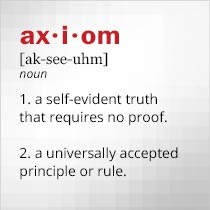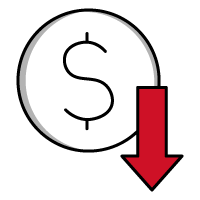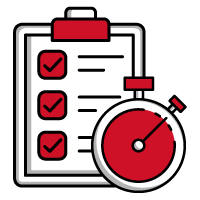Calibrating the Way to Process Control
March 01, 2024
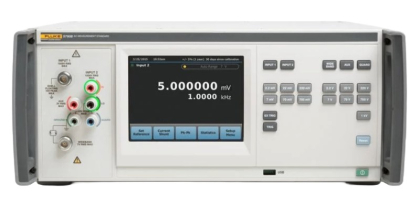 |
Automated industrial manufacturing processes have many built-in measurement devices to ensure the processes run properly. The units keep track of parameters important to the processes, such as temperature, pressure, voltage, current, resistance, and frequency. They communicate conditions to a central controller where data can be analyzed to optimize an industrial process. But time takes its toll on these testers, and they must be regularly calibrated to effectively support an industrial process. Fortunately, calibrators offer the precision needed to evaluate in-process testers. Aided by communicators, they can securely deliver test results to a control center to effectively manage an industrial process. In some cases, calibrators and communicators come in the same package, often small enough to be held in one hand for on-site measurements.
For effective process test equipment calibration, a calibrator must be a source of precisely controlled parameters as well as a highly accurate measuring tool for evaluating the same parameters. A calibrator must often inject a parameter, such as voltage, current, pressure, or temperature, into the process equipment under test to determine the condition of the equipment. As a calibration source, it must provide each parameter with precision and stability to support fine tuning of the industrial process equipment. As an analyzer, it must be capable of the accuracy and repeatability needed to maintain a process within well-defined limits. A calibrator often requires bidirectional communications capability to transfer test data acquired from the process equipment to a control station.
Traditionally, data transfers to and from a calibrator were handled by dedicated communications equipment. But growing demand for mobility and portability in calibrators capable of in-field use has resulted in calibrators and communicators often within the same package. When equipped with suitable communications interfaces, such as Ethernet or Bluetooth, calibrator/communication devices can quickly and seamlessly make their connections to the process equipment to be tested as well as to a control center. Multifunction calibrators are often equipped with multiple communications interfaces, including Ethernet, USB, Bluetooth, and Wi-Fi interfaces, to simplify transfer of measured process data from a remote calibrator to a control station for managing the test results.
Several protocols have been developed for process control equipment communications, including the PROFIBUS interface, the FOUNDATION Fieldbus communications protocol, and the highway addressable remote transducer (HART®) protocol. These vendor-independent open communications protocols have evolved to communicate between typically digital process measurement/control devices and control centers often based on traditional 4-to-20-mA analog control loops. The HART protocol, for example, combines a 1.2-kbaud frequency-shift-keying (FSK) digital communications signal with the conventional 4-to-20-mA analog channel to enable timely communications between control centers and sensors and other process-control units. HART communications can be enabled by the loop power supply for a processing system test device, such as a pressure transmitter.
As greater numbers of microprocessor-powered “smart” devices are incorporated into automated industrial processes, including those drawing upon artificial intelligence (AI) and machine-learning (ML) capabilities, wired and wireless communications links provide the frequency bandwidth for timely communications of generous amounts of industrial process data. Calibrators help ensure that the measurement devices feeding automated industrial processes perform as accurately as possible.
Choosing a Calibrator
Pressure is a key ingredient in many industrial processes and among the physical parameters that must be measured precisely over a broad range. Various components comprise industrial systems relying on pressure, including transmitters, sensors, and switches, and each must be calibrated to maintain process control. Fortunately, the Additel ADT762 Automated Pressure Calibrator has been designed in a versatile format and size [28 lbs. (12.8 kg)] that supports both laboratory and in-field calibrations. Powered by a rechargeable Li-ion battery, it can measure hydraulic pressure as high as 10,000 psi with an IP31 industrial rating. While a bright, 7-in.-wide thin-film-transistor (TFT) color touch-screen display eases on-site measurements, the hydraulic pressure calibrator is well equipped to remotely communicate data, with Ethernet, USB, Bluetooth, and Wi-Fi interfaces.
When communications within an automated industrial process is in question, the Emerson AMS Trex™ Device Communicator is a compact modular device that simplifies on-site measurements of communications devices, often without disrupting a process in progress. The handheld device provides operation through a 5.7-in. resistive touchscreen display and can be configured for different functions according to the application software loaded on the tester. Applications (apps) are available for troubleshooting devices linked by the FOUNDATION Fieldbus and HART communications protocols (the Field Communicator app), analyzing valve assemblies (the Valvelink Mobile app), and performing process loop characterization and validation (the Loop Diagnostics app).
The Fluke 754 Documenting Process Calibrator targets HART-linked measurement devices for a half dozen process parameters: temperature, pressure, voltage, current, resistance, and frequency. It measures as well as sources the parameters, recording calibration results to simplify in-field use. It is ideal for process equipment calibrations, troubleshooting, or routine maintenance, including sensor trims to adjust the range of a measurement sensor to a process. The handheld model 754 works with software from Fluke and other sources to create calibration and test procedures to help optimize industrial process equipment.
The documenting process calibrator transfers test results without an additional communicator. It records and documents data and features a USB interface for two-way communication with a personal computer (PC) or PC-controlled device. To simplify calibrations, the calibrator can download procedures and lists to serve as menus. It can even measure and source pressure but requires that the appropriate module from Fluke is attached to the 754. The 754 includes resistors which can be connected in series with a loop power supply as needed, such as for temperature transmitter calibrations. The 754 calibrator operates for a full working shift (about 8 hours) on a rechargeable lithium-ion (Li-ion) battery pack.
Fluke Calibration also offers several multiproduct calibrators, such as the Fluke 5540A and Fluke 5560A. Both offer the same measurement capabilities in different packages, with the 5540A designed for mobile, on-site use and the 5560A in a rack-mount equipment housing. Both show results on a bright color touchscreen display and both are equipped with USB, Ethernet, RS-232, and GPIB interfaces for connections to computers and other equipment. These calibrators make direct voltage (DC) measurements from 0 to ±1020 V and 0 to ±30.2 A and alternating (AC) voltage and current measurements of 1 mV to 1020 V and 10 μA to 30.2 A, respectively, both at frequencies from 3 Hz to 30 kHz. The calibrators allow resistances to be set from 0 ? to 1200 M?, capacitances from 200 pF to 120 MF, and inductances from 12 μH to 12 H.
For rack-mount test setups, consider the Fluke 5790B AC Measurement Standard. It features almost negligible measurement uncertainty, with the accuracy and stability to serve as an AC reference standard for precision measurements over a wide range of operating voltages. It can make direct absolute and relative current measurements at frequencies from 10 Hz to 1 MHz. Voltage ranges can be set from low to high, from a range as low as 600 μV to 2.2 mV to a range as high as 600 to 1050 V. Readings are shown on a clear, touch-screen display which provides quick access to a current shunt menu backed by a large library of selectable current shunts when preparing a measurement. The 5790B includes the processing power to perform waveform calculations on four types of waveforms as well as the statistical capability for making measurements over time to track trends.
This has been a small sampling of the calibrators, communicators, and combination units available for helping maintain efficient and uninterrupted industrial process control. Visitors to the Axiom Test Equipment site can find additional calibration equipment in the “Calibration” section and can reach a sales advisor for guidance at (760) 806-6600.
Back to BLOG


